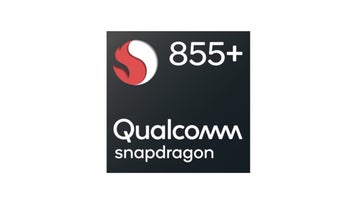AnTuTu names rarely used SoC as the most powerful chipset for Android last year

The AnTuTu app puts handsets through a test that rates them so that consumers can rank their relative performance vis-à-vis other handsets. One of the factors that determine a phone's AnTuTu score is the CPU found under the hood. And this gives AnTuTu an idea of the relative merits of different chipsets. According to GizChina, AnTuTu has announced which system on a chip (SoC) was the strongest performer in 2019 for Android devices along with the names of other chipsets that were named the best in other categories.
AnTuTu says that the overclocked Snapdragon 855+ Mobile Platform was the strongest performing SoC for Android devices in 2019. The SoC was announced around the middle of the year and with a 15% performance boost in the Adreno 640 graphics processing unit (GPU), the chip was designed for mobile gaming phones. As Qualcomm has said, the Snapdragon 855+ will "raise gaming to the next level." Besides the hike in GPU performance, the SoC's Kryo 485 CPU Prime core clock speed was raised from 2.84GHz to 2.96GHz.
AnTuTu says that four chipsets were among the most innovative of 2019
The integration of 5G modem chips helped create a tie in the category known as "Technology Innovation." The HiSilicon Kirin 990 5G chipset, designed by Huawei's HiSilicon unit, was among the four SoCs named as winners in this category. Manufactured by TSMC using its 7nm EUV process, the chipset contains over 10.3 billion transistors. The winners in this group also include the MediaTek Dimensity 1000, which also has a 5G modem chip integrated into the SoC. We can also add the Snapdragon 765G Mobile Platform to this list. Qualcomm's next gaming-based SoC features an integrated 5G modem chip like the other two and the Adreno 620 GPU delivers 10% faster graphics rendering compared to the vanilla Snapdragon 765 Mobile Platform. And can you figure out what the Samsung Exynos 980 chipset offers to get it placed on the innovation list? If you said an integrated 5G modem chip, kudos. You're a quick learner (or you can understand the obvious).

The best performing Android chip of 2019 according to AnTuTu is the Snapdragon 855+
The last category is for the most cost-efficient chip and this category has two winners, the HiSilicon Kirin 810 and the MediaTek Helio G90T. The former consists of two Cortex-A76 performance cores (running as fast as 2.27GHz) and six Cortex-A55 efficiency cores (with a clock speed up to 1.88GHz). The latter chip offers improved latency for graphics rendering and was made for gaming phones.
If you're wondering why the Apple A13 Bionic isn't mentioned anywhere, Antutu has the answer. "All in all, the scoring mechanisms for the iOS version and the Android version of Antutu Benchmark are significantly different, and therefore the test results of the two versions are not directly comparable. To put it simply, the test results of Antutu benchmark only support the comparison within the same system based on the same major version and not support cross-version or cross-platform comparison." So there you go.
Some big changes are coming to the SoC market around the middle of next year. That is when TSMC and Samsung will start producing chips using the 5nm process. The process figure refers to the number of transistors that can fit into a small dense space like a chip and the smaller the number, the larger the number of transistors inside an integrated circuit. This is important because a chip with more transistors packed inside is going to be more powerful while consuming less energy than chips made using a larger process node. In addition, with the use of EUV (extreme ultraviolet lithography), wafers are more precisely marked up using an ultraviolet light. This allows for more precise placement of transistors and the creation of more powerful and energy-efficient chips.
Two major SoCs will be unveiled during the second half of the year produced with the 5nm process. The Apple A14 Bionic will give the iPhone a bigger performance advantage than the one it already enjoys over most Android phones. That's because the Snapdragon 800 series won't turn to 5nm until the 875 Mobile Platform rolls off of TSMC's foundry in 2021. So while the iPhone 12 and iPhone 12 Pro models could be the first handsets to be powered by a 5nm chip when released next September, Huawei's Mate 40 line will most likely be the first Android phones equipped with a 5nm SoC next October. That's because the unannounced 5nm HiSilicon Kirin 1020 chipset is expected to be ready in time for the release of the Mate 40 series during the fall of 2020.










Things that are NOT allowed: